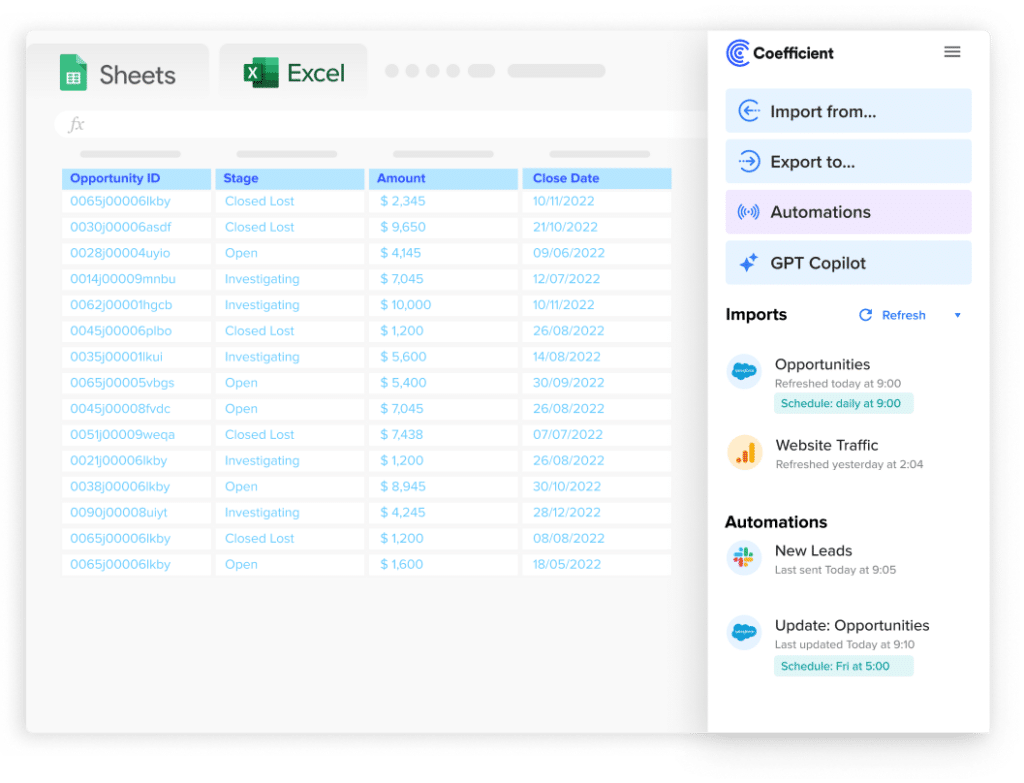You want to know how much Looker will set you back. Not so fast. You’ll have to talk to sales first.
And when you do, prepare for sticker shock—Looker starts at $60,000 per year. And once you factor in:
- Actual user counts
- API limits that match your needs
- Professional services for implementation
- Annual price increases (typically 5-7%)
You’re looking at $150,000+ for a mid-sized company. Every year.
Hits different when trying to build on a budget, huh?
Fortunately, there’s a workaround that gives you the same insights for a fraction of the price. We’ll talk about that in a bit.
But first, let’s break down what you’re really paying for with Looker.
The uncomfortable truth about Looker pricing
Looker keeps its pricing behind a sales wall for good reason. They’re targeting enterprises with deep pockets.
Here’s what we know:
- Minimum commitment: $60,000/year (that’s $5,000/month)
- Average cost: $150,000/year according to procurement data
- Maximum recorded: $1,770,000/year for large deployments
No wonder teams are looking for alternatives.
Four things nobody tells you about Looker pricing
1. They killed the free trial (and what that means for you)
Back in 2018, Looker offered a 21-day free trial. You could test drive the platform, explore features, and make an informed decision.
Not anymore. Looker now operates on a purely sales-led model. Want to try before you buy? You’ll need to schedule demos and negotiate with enterprise sales reps first.
This shift signals their focus on large enterprise deals rather than smaller teams or startups.
2. The three-tier pricing structure hides massive costs
Looker offers three editions, each with hidden complexities:
| Edition | Annual Price | Who It’s For | Included Users | API Limits | Instances | Notes |
| Standard | $66,600 | Teams under 50 users | 10 Standard Users2 Developer Users | 1,000 query-based API calls/month | 1 production instance | Limited API usage; additional users cost extra |
| Enterprise | $132,000 | Larger orgs needing more API access | Same as Standard | 100,000 query-based API calls10,000 administrative API calls | 1 production instance | Security upgrades that may be overkill for mid-market companies |
| Embed | $198,000 | SaaS companies with customer-facing analytics | Same as Standard | 500,000 query-based API calls100,000 administrative API calls | 1 production instance | Only viable option for serious embedded analytics use cases |
But here’s the kicker—those prices don’t include additional users:
- View users: $400/year each
- Standard users: $799/year each
- Developer users: $1,665/year each
A 100-person company could easily hit $250,000 annually just on user licenses.
3. The average company pays way more than the minimum
According to Vendr’s data from 355 actual deals:
- Average annual cost: $150,000
- Median contract length: 12-24 months
- Typical user count: 50-100 users
- Common add-ons: Additional API calls, staging environment
4. Budget-conscious teams are finding alternatives
Analytics communities are full of teams expressing sticker shock over Looker’s pricing. Comments like “Looker is way too expensive for our small team” appear regularly.
The good news? You don’t need to sacrifice data insights because of budget constraints.
The spreadsheet-powered solution that saves you $140,000+
Here’s the hack smart ops teams are using. Instead of paying Looker’s enterprise prices, turn your spreadsheet into a live data pipeline.
Think about it. You need:
- Live data from your business systems ✓
- Automated refreshes ✓
- Clean visualizations ✓
- Easy sharing ✓
Your spreadsheet can do all of this—with the right connection.
How Coefficient turns spreadsheets into BI powerhouses
Coefficient connects your spreadsheet directly to 70+ data sources. No ETL. No data warehouse. Just live data flowing into the tool you already know.

Stop exporting data manually. Sync data from your business systems into Google Sheets or Excel with Coefficient and set it on a refresh schedule.
Get Started
Here’s how teams are using it to replace expensive BI tools:
Example 1: HubSpot to Looker Studio
Say you want HubSpot data in Looker Studio. There’s no native connector, but here’s the workaround:
- Use Coefficient to pull live HubSpot data into Google Sheets
- Set up automatic refresh schedules
- Connect Google Sheets to Looker Studio (free connector)
- Build your dashboards in Looker Studio
This gives you real-time HubSpot insights without any BI budget. You get the visualization power of Google’s platform with automatic data updates.
The same approach works for blending multiple sources. Add Salesforce, GA4, Snowflake, or QuickBooks data to the same sheets. Create comprehensive dashboards spanning your entire business ecosystem.
Example 2: The Power BI workaround
Power BI doesn’t have a native HubSpot connector either. But the middleware approach works perfectly:
- Pipe live HubSpot data into Google Sheets with Coefficient
- Keep it on a refresh schedule
- Use Power BI’s free Google Sheets connector
- Build dashboards in Power BI
You get enterprise-grade BI capabilities without the enterprise price tag. Perfect for operations teams managing tight budgets.
This approach works with any BI tool that connects to Google Sheets. Tableau, Grafana, Data Studio—the possibilities are endless.
How Coefficient pricing compares (spoiler: it’s 1,000x cheaper)
While Looker starts at $60,000, Coefficient’s pricing reflects reality:
- Starter: $59/month for individuals
- Pro: $119/month for teams
Even with the Pro plan, you’re paying $1,428 annually versus Looker’s $60,000 minimum. That’s a 97.6% cost reduction.
You get:
- All your live data
- Scheduled refreshes
- Slack and email alerts
- AI Sheets Assistant
- No user limits on viewing data
Make the smart choice for your budget
Looker’s pricing makes sense for Fortune 500 companies with dedicated BI teams. For everyone else, there’s a smarter way. Turn your spreadsheet into a live data hub that connects to any visualization tool—saving tens of thousands in the process.
Ready to see how much you could save? Try Coefficient today and build your first automated dashboard in minutes, not months.

